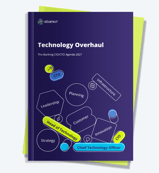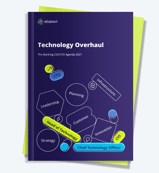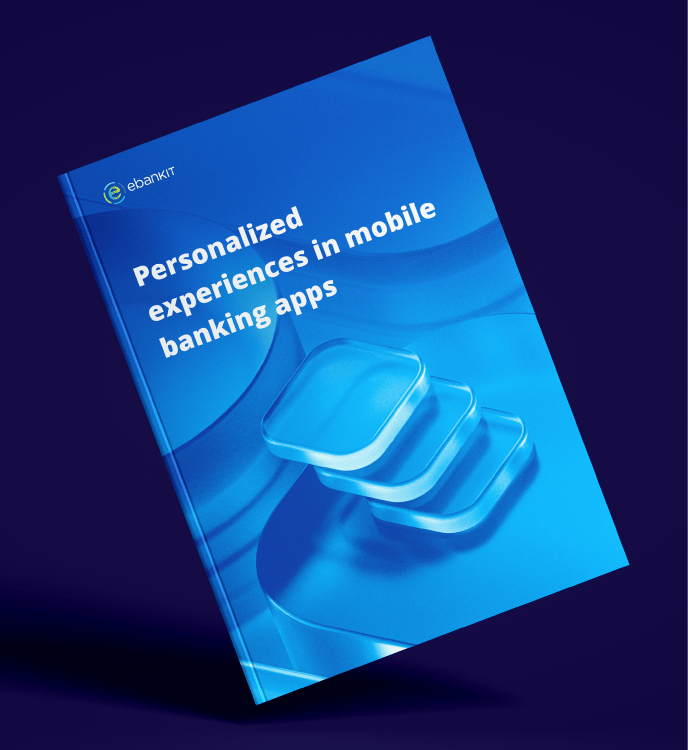Decoding digital banking: prioritizing top challenges and emerging trends
Recorded on June 12, 2025
![]()
![]()
![]()
![]()
SPEAKERS
SUMMARY
This panel unpacked digital banking’s top challenges, from unorganized data and rigid legacy systems to leadership gaps and cultural inertia. They called for modular architecture, agile mindsets, empowered employees, and deeper customer understanding, urging banks to evolve from transactional models into differentiated, human-centered ecosystems driven by trust, technology, and adaptability.
Key topics
Financial institutions often collect large amounts of data but then struggle with how to use it. They must organize, clean, and strategically leverage data to create value and reduce risk.
Composable systems drive scalable innovation and simplify complexity, especially for banks operating with cryptocurrencies across different regions.
Financial institutions need to move beyond uniform app design and focus on life-event-based experiences and offer proactive financial support to truly serve customers.
Transcript
00:00:00 - Introduction
Rui Brito opens the panel by acknowledging the unpredictability of technology's evolution and welcoming the audience to a discussion on trends and predictions in digital banking.
He sets a conversational tone and introduces the first speaker: Carrie Forbes, founder of Rockstar Advisory, podcaster, open banking evangelist, and 2024 International Woman of the Year at the Open Banking Expert Awards.
Carrie dives into the topic of data, calling out the common saying, "data is the new oil," but critiques how many banks handle it, “drilling with teaspoons.” She compares data management to hoarding. Organizations have mountains of disorganized, unstructured data they can’t make use of, much like a packed storage closet.
The main challenges include data quality, "Garbage in, garbage out.", Over-retention, institutions fear deleting data due to potential future need or compliance risks. Finally, lack of visibility, many don’t even know what data they have.
She argues that starting from scratch can sometimes be easier than sorting out messy legacy data, but she also emphasizes the value hidden in existing data if it's handled correctly.
She recommends hiring external experts and forming partnerships to bring objectivity and structure to data cleanup and strategy. Acknowledging one's "data hoarding" is the first step toward becoming a "data whisperer."
00:05:00 - Composable architecture
The conversation shifts from data to the decentralized world of crypto and composable architecture, introduced through Aju Kurian, Associate Director and Product Owner at Amina Bank. Rui highlights Aju's passion for composable systems and frames the discussion around Amina Bank’s identity as a “borderless” bank but with real-world constraints like compliance, latency, and cross-border coordination.
The key question is: Does composable architecture prevent chaos or simply spread it into smaller, modular pieces?
Aju begins by acknowledging the complexity of operating at the intersection of crypto and fiat, particularly across multiple jurisdictions. He explains that one of the most difficult challenges is dealing with the unknowns. How to handle what you don’t know you don’t know. Instead of trying to have all the answers, Amina Bank focuses on building adaptable systems that are good at responding to change. The team embraced decoupling, breaking apart their tightly coupled systems into modular pieces, which required a shift not only in technology but in mindset and culture.
A crucial insight was the need for an abstract layer—a buffer that allows individual components to evolve independently without disrupting the entire system. This was especially critical for managing both crypto and fiat operations, where a single monolithic system was becoming increasingly fragile under the pressure of change. With a composable design, they could isolate components, ensure security, and maintain system stability while still allowing flexibility. Aju emphasized that execution, supported by the right people and processes, is what ultimately drives successful transformation—particularly in a fast-paced, digital-native client environment.
Rui builds on this by pointing out how human factors remain central despite technological evolution, prompting another provocative question: if composability is like Lego, where you can swap parts easily, what’s the first piece of the legacy fintech stack you’d throw away and replace—and why? The question sets the stage for deeper reflections on prioritizing innovation while managing complexity in the evolving digital banking ecosystem.
00:10:00 - Compliance challenges and true agility in Banking
Following the discussion on composability, Aju Ku riandives deeper into one of Amina Bank’s major challenges: customer onboarding and compliance, particularly in the context of serving high-net-worth individuals. Aju explains that the most difficult aspect isn't just technical—it’s the need to rapidly align systems, processes, and people with constantly evolving regulations.
Contrary to the old belief that regulation lags behind innovation, he asserts that regulators are now moving fast, especially in the jurisdictions Amina operates in, which forces banks to remain agile and proactive.
He reflects on the transition from a relatively unregulated crypto environment to a fully regulated banking space, arguing that rules are not barriers but enablers. They provide predictability and trust, especially for clients who expect seamless and secure experiences. The key, Aju says, lies in balancing compliance with customer engagement—maintaining an experience that meets the expectations of digitally native clients while ensuring regulatory obligations are met. This transformation is ongoing, but it’s driven by culture, adaptability, and continuous learning.
Rui then transitions the conversation to Lubomir Olach, Head of International Development and Member Relations at Qorus, introducing him as someone who helps banks manage transformation, ecosystems, and scale.
The next question is focused on a recurring paradox: banks speak of agility and innovation but often get bogged down by bureaucracy, even needing multiple steering committees to approve something as basic as a landing page.
Lubomir responds with humor, recalling a story about a fintech that wanted to partner with a bank but got stuck in endless meetings before any real work began.
He emphasizes that the human factor is critical. Drawing from a visit to ING, he shares how they implemented agility, starting in the Netherlands and later in Belgium. While ING saw success through structural change (such as reorganizing into squads and tribes), the transformation required everyone to reapply for their positions, which was a bold and even frightening move. The cultural differences between countries also affected the pace of change, authority structures, and mindset mattered.
Lubomir stresses that true agility goes beyond IT. It needs to be applied thoughtfully across the organization. Some banks, he notes, pretend to be agile but only implement it in name, not in practice.
Successful digital transformation requires strategic rollout, not blind implementation of frameworks. It must be tailored to organizational context, not forced uniformly.
00:15:00 - People, vision, and the struggle to differentiate in digital banking"
The conversation turns to a widely repeated corporate phrase “our people are our biggest asset” and whether banks genuinely believe it or just include it in their slide decks by default.
Lubomir reflects on a conversation he had years ago with the CTO of Simple, a now-defunct U.S. digital bank, who stated he was willing to share everything, except the people, because they were the true differentiator. This comment stuck with Lubomir and reinforces his view that processes are meaningless without the right talent behind them.
He shares findings from a recent Qorus study on innovation in retail banking, which revealed a troubling insight: over 60% of banking leaders lack a clear vision when it comes to business model reinvention and technological direction. Many executives, even at the C-suite level, do not have a technology background, which contributes to the sluggish pace of innovation and digital transformation in traditional institutions.
The discussion then moves to industry conservatism and how it hinders real change. Lubomir points out that despite the explosion of digital banking, many apps and user experiences across banks feel almost identical, leading to a commoditized offering.
He argues that banks are struggling to differentiate themselves, especially when most mobile apps have the same features and interfaces—often blue-themed, he jokes.
He highlights DBS as a positive counterexample, once a traditional bank, DBS transformed itself into a customer-centric digital leader, aiming to act not just as a bank, but as a financial companion that supports users during key life events, not just basic transactions. Similarly, he praises banks like NatWest, which are beginning to incorporate proactive financial guidance into their platforms.
While onboarding has become fast and efficient, often taking just 10 to 15 minutes with digital ID, the next challenge is deeper. Do banks truly understand their customers? Lubomir asks a critical question: Beyond the data from direct banking interactions, are institutions in tune with their customers' life journeys and needs? It’s a question that financial institutions—and even he himself—should be asking more seriously.
00:20:00 - Embedding agility and ownership in a changing banking culture
The panel wraps up by revisiting the challenge of embedding agile culture in traditional institutions still tied to quarterly waterfall models. The consensus is that it’s not just a matter of process—it’s deeply tied to ego, leadership, and corporate politics.
As companies grow, even those that started off agile often lose their spirit and flexibility. Sustaining agility, the panelists argue, demands persistent leadership commitment and a culture that resists unnecessary complexity. Inspiration can be drawn from big tech companies like Amazon, which successfully scale while keeping agile principles intact.
Carrie adds a broader perspective, drawing on her early days in banking when internet banking was considered a disruptive threat to traditional branches. She notes that banking is caught between two opposing pressures: the desire for high-volume, low-cost transactions, and the need for authentic, trust-based relationships.
This pressure, she warns, can lead organizations to make short-sighted decisions—like cutting frontline staff, who are often the true culture carriers of the brand. She cites the example of CLA, a company that let go of 700 frontline workers only to face significant consequences later.
The conversation shifts to employee empowerment. Aju emphasizes that banks must look beyond the customer and also focus on enabling their employees. By giving staff tools—such as automation, data visibility, and simplified processes—they are more likely to take ownership and drive progress from within. This empowerment becomes self-sustaining, creating a ripple effect that improves both employee and customer experiences. The panel agrees this internal alignment is what ultimately shapes a resilient, innovative culture.
The session ends with closing remarks and appreciation from the moderator, Rui, who thanks the panelists for their honest insights. He invites everyone to continue the conversation informally over lunch, highlighting that while the talk was short, the challenges ahead are long-term—and shared.




%20without%20SAM%20-%20Maturity%20Level%20-%202-KO%20edit.webp?width=160&height=57&name=67768-ebankIT%20Platform%20-%20CMMI%20Development%20V2.0%20(CMMI-DEV)%20without%20SAM%20-%20Maturity%20Level%20-%202-KO%20edit.webp)
